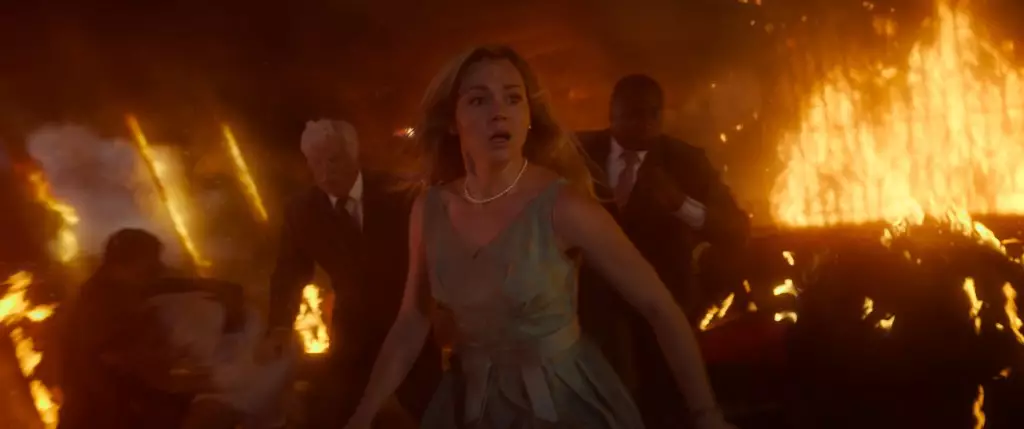The cinematic landscape is buzzing with excitement as the Warner Bros. horror franchise makes a highly anticipated return with “Final Destination: Bloodlines,” the first sequel released in over a decade. As a revival of a beloved series that has thrived for 25 years, this entry is poised to break records, with projections estimating its debut at an impressive $35 million to $40 million across 3,400 locations. In an age where horror movies reign supreme at the box office, the stakes are high, and “Bloodlines” is ready to fulfill fan expectations while drawing in new audiences.
The strength of this film lies not only in its historical legacy but also in its contemporary relevance. With global forecasts suggesting a potential intake of $70 million, “Bloodlines” captures the essence of the horror genre—a blend of suspense, fear, and unexpected twists. Directed by Zach Lipovsky and Adam B. Stein, the film has seen tremendous buzz, particularly among young female audiences, a demographic that has been crucial for horror films’ success in today’s market.
Defying Death – A Timeless Theme
At its core, the “Final Destination” franchise has relentlessly explored the theme of dodging death only to have it come back in increasingly bizarre and creative ways. The innovative premise revolves around characters who manage to cheat fate after a foreboding premonition but ultimately learn that they cannot escape their inevitable demise. With “Bloodlines,” the focus shifts to a college student plagued by violent nightmares, who seeks to save her family from a dreadful fate—an age-old narrative that never fails to captivate audiences. This engaging premise, initially conceived by Jeffrey Reddick as a speculative script, continues to resonate deeply, prompting both nostalgia and intrigue among fans.
However, what sets “Bloodlines” apart from its predecessors is the elevated production quality and tailored marketing strategy that appeals to its primary audience: younger demographics. As horror continues to evolve with the times, it remains vital for filmmakers to adapt and resonate with new cultural trends, ensuring that generational ties to the franchise remain strong.
Critics and Audience Reception
Early reviews suggest that “Bloodlines” could become a hallmark entry among horror films, boasting a dazzling 93% rating on Rotten Tomatoes. Critically acclaimed films within the genre have managed to blend artistic integrity with commercial success. As viewers seek authenticity in their cinematic experiences, the strong positive reception promises to appeal not just to die-hard fans, but also to newcomers exploring the horror realm for the first time.
The weekend excitement will be further bolstered by the wide distribution across numerous theaters, accompanied by midnight previews, allowing eager fans a first glimpse ahead of its official premiere. As “Bloodlines” emerges on the silver screen, it’s clear that audiences are looking for shareable experiences that can drive communal fear and exhilaration. The collective involvement of fans has potential ripple effects beyond just ticket sales, enhancing word-of-mouth marketing efforts that facilitate success in the long run.
Competing Titles and The Evolution of Horror
Meanwhile, as “Bloodlines” lights up theaters worldwide, it will need to contend with other heavyweights at the box office, including Warner Bros.’ own “Sinners,” starring Michael B. Jordan and directed by Ryan Coogler, which is projected to generate substantial revenue in its own right. The competition provides a litmus test for varying horror styles—not merely survival from death, but complex narratives and innovative storytelling techniques that characterize today’s cinematic endeavors.
Moreover, the impending release of “Hurry Up Tomorrow,” spearheaded by The Weeknd, introduces yet another flavor to the genre, pushing creative boundaries through music-infused storytelling. Despite lower initial projections, the melding of pop culture with cinema remains crucial in our rapidly evolving media landscape. This organic fusion could arm filmmakers with new tools for narrating horror tales while concurrently raising the stakes for audience engagement.
By diving deeper into the cinematic experience and emphasizing authentic connections with viewers, filmmakers have the potential to both reinvigorate classic franchises and cultivate new narratives that resonate across diverse audiences. As horror movies continue to evolve, it becomes imperative for creators to harness the magic of storytelling, ensuring that they surprise, entertain, and, most importantly, terrify audiences in unexpected ways.
